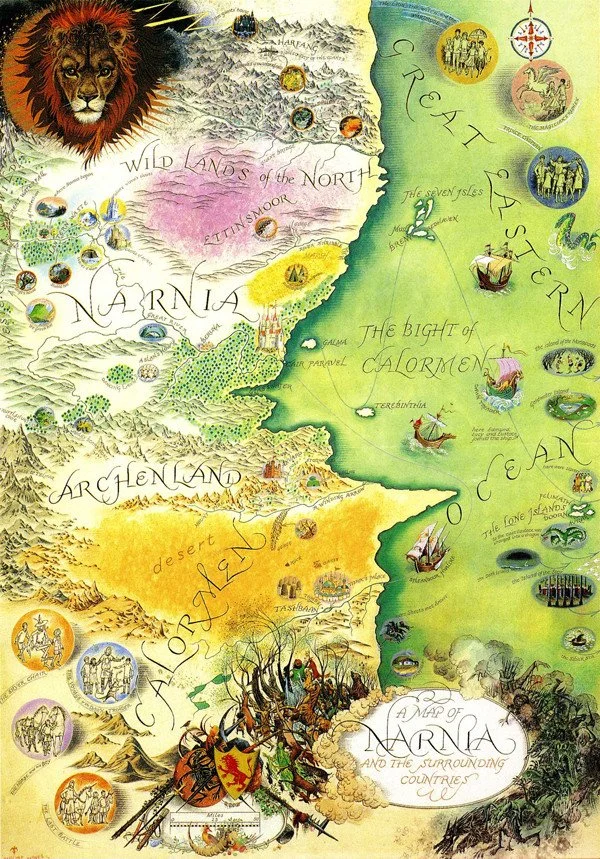Fantasy Crisis Focus
Ahead of the conference, we thought it would be useful to dive a bit deeper into our two special crisis committees. This second post takes us into the world of Narnia, as we explore the topic for this year’s fantasy crisis committee. In fact, you don’t have to go far to find Narnia in the city of Oxford, as C. S. Lewis wrote the books while he was teaching at Magdalen College in the 1950s, and was supposedly inspired by a lamppost, lion door carving, and gilded fauns in St. Mary’s Passage next to the Radcliffe Camera.
There are seven books in the Chronicles of Narnia series, and each takes place in a different era of the world of Narnia. Yet, they are all connected by shared themes and the continual presence of the lion Aslan, who created Narnia and watches over it in each era. Lewis was significantly influenced by his Christian faith when writing the Chronicles - as clearly seen when Aslan gives up his life to pay the penalty that Edmund deserved in The Lion, the Witch and the Wardrobe and then rises to life again - as well as mythology and medieval literature. This committee is concerned with the entire history of Narnia, from its creation to its experience of “evil” later on; each delegate will play a vital role in determining the course of history for this beautiful, ancient land.
Delegations to the Committee
The varied mix of delegates for this committee is one of its most exciting aspects. Some delegations are taken straight from the books (e.g., Aslan, the chief dwarf, Strawberry the talking horse etc.), while others are supplementary characters extrapolated from the stories but created by us for the purpose of this committee (e.g., President of the Movement to Silence Talking Animals, Gardener of the Wood Between Worlds, Caretaker of the lamppost etc.). This means that when writing position papers for the fantasy crisis, or thinking about the debates which will be taking place in committee, it is important to be familiar with the books while also allowing yourself some creative freedom. Use the context given by the Chronicles to think about how your character might react to different situations and relate to different groups of people (or animals, or even trees!) within Narnia.
The committee takes as its inspiration the First Narnian Council, a committee in The Magician’s Nephew, the first book of the Chronicles of Narnia. However, only a small number of delegates are within this named council in the book, which only has seven official members. The council is called immediately after Aslan creates Narnia, to deal with what he called the issue of “evil” that has come into their midst, referring to the presence of Jadis, the White Witch, brought in by the human children Polly and Digory. The delegates’ responsibilities are to define and debate how to deal with this “evil” – this can only be done by first attempting to overcome the divisions and factions which seem to plague Narnia from its inception.
A Note on Time
This committee will, most likely, jump backwards and forwards in time between eras and characters; just like Aslan, this committee’s power is not bounded by time. This will make the committee even more fast-paced, as a variety of topics are explored and the long-term implications of your resolutions are realised.
We cannot wait to welcome you to the ancient world of Narnia…

